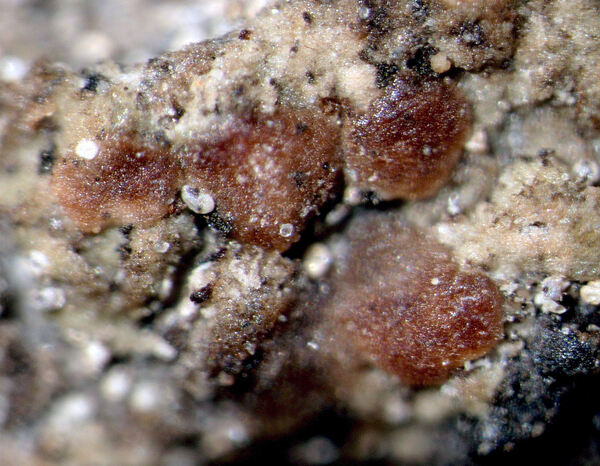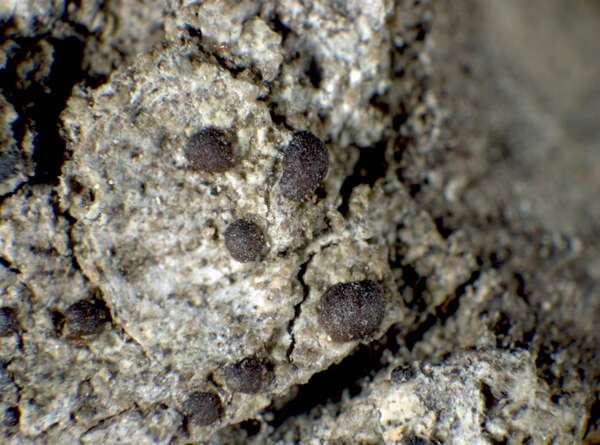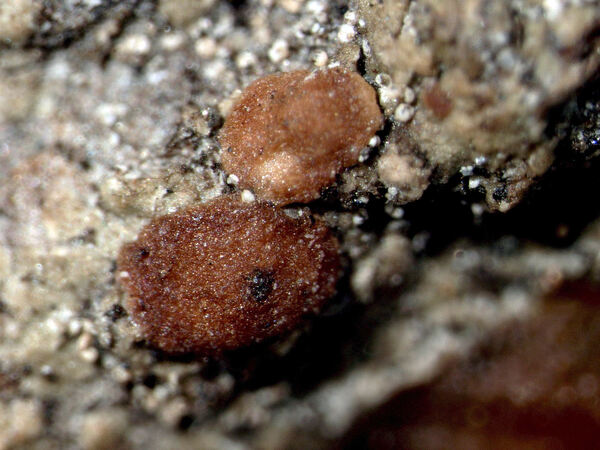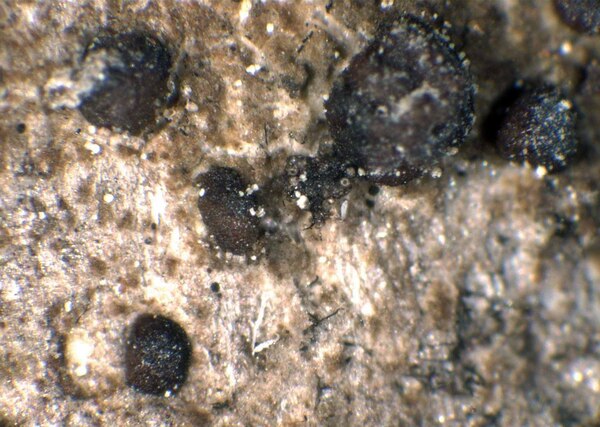Japewia tornoënsis (Nyl.) Tønsberg
Lichenologist, 22: 206, 1990. Basionym: Lecidea tornoënsis Nyl. - Herbar. Mus. Fenn.: 110, 1859.
Synonyms: Biatora tornoënsis (Nyl.) Th. Fr.; Lecidea breadalbanensis Stirt.; Lecidea frigidella Nyl.; Mycoblastus tornoënsis (Nyl.) R.A. Anderson
Distribution: N - Frl (Tretiach & Hafellner 2000), Ven (Thor & Nascimbene 2007), TAA (Nascimbene 2004, 2014, Nascimbene & al. 2006e, 2014, Nascimbene & Marini 2015, Trindade & al. 2021), VA (TSB 29475).
Description: Thallus crustose, brown-green to dark brown, thin, continuous to rarely rimose, often evanescent, smooth, forming up to 5 cm wide patches. Apothecia biatorine, sessile, 0.4-0.8(-1) mm across, with a dark reddish brown, epruinose, usually strongly convex, often tuberculate disc, and a mostly indistinct proper margin. Proper exciple thin, colourless to brown, of radially arranged hyphae; epithecium thin, brownish, without crystals; hymenium colourless or brown-streaked in upper part, 50-90 µm high, K-, I-; paraphyses coherent, branched and anastomosing, 1-1.5 µm thick at mid-level, the apical cells up to 3.5(-4) µm wide, with a distinct brown cap, the pigment deposited outside the cell wall; hypothecium colourless or patchily brown, 60-185 µm high. Asci (6-)8-spored, broadly clavate, with a well-developed amyloid tholus, with or without a distinct ocular chamber, a non-amyloid wall and an amyloid outer cap. Ascospores 1-celled, hyaline, broadly ellipsoid to subglobose, (15-)17-22(-24) x (8-)10-15 µm, the wall layered, (1-)1.5-2.5(-3) µm thick. Photobiont chlorococcoid. Spot tests: thallus K-, C-, KC-, P-, UV-. Chemistry: without lichen substances.Note: a circumboreal-montane species found on twigs of shrubs, on terricolous mosses and plant debris in upland areas, usually over siliceous substrata; certainly widespread throughout the Alps.
Growth form: Crustose
Substrata: bark, soil, terricolous mosses, and plant debris
Photobiont: green algae other than Trentepohlia
Reproductive strategy: mainly sexual
Commonnes-rarity: (info)
Alpine belt: extremely rare
Subalpine belt: rather common
Oromediterranean belt: absent
Montane belt: rare
Submediterranean belt: absent
Padanian area: absent
Humid submediterranean belt: absent
Humid mediterranean belt: absent
Dry mediterranean belt: absent
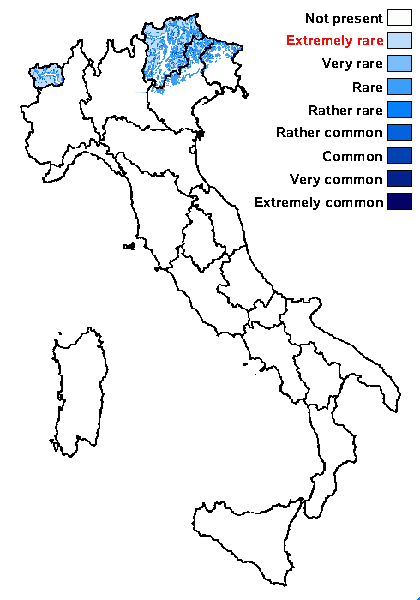
Predictive model
Herbarium samples
Growth form: Crustose
Substrata: bark, soil, terricolous mosses, and plant debris
Photobiont: green algae other than Trentepohlia
Reproductive strategy: mainly sexual
Commonnes-rarity: (info)
Alpine belt: extremely rare
Subalpine belt: rather common
Oromediterranean belt: absent
Montane belt: rare
Submediterranean belt: absent
Padanian area: absent
Humid submediterranean belt: absent
Humid mediterranean belt: absent
Dry mediterranean belt: absent

Predictive model
| Herbarium samples |
 INDEX FUNGORUM
INDEX FUNGORUM
 GBIF
GBIF
 DOLICHENS
DOLICHENS
